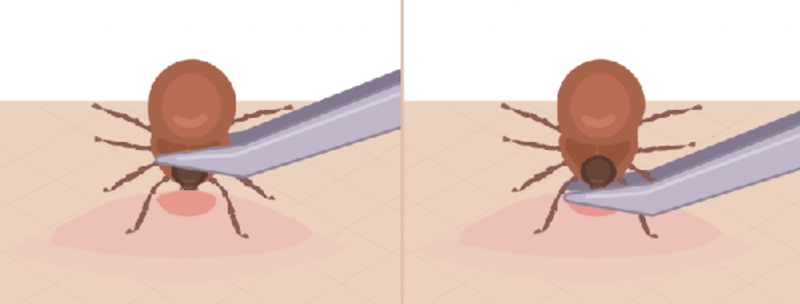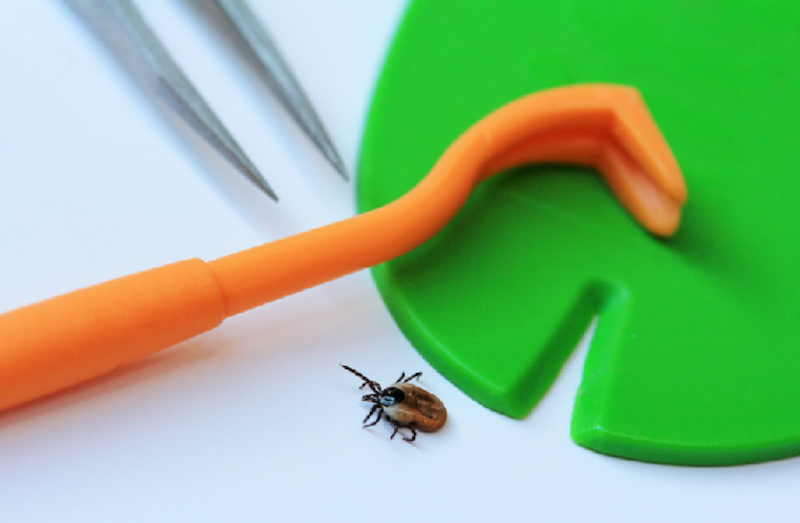How to protect yourself from ticks
This article provides information on how to protect yourself from ticks and therefore the risk of lyme disease.
What is Lyme Disease?
Lyme disease - also known as Lyme borreliosis - is a bacterial infection which can be passed to humans by the bite of an infected tick.
Early symptoms include skin rashes and/or flu-like symptoms, but the disease can affect multiple systems in the body, including the skin, joints, nervous system, eyes and heart.
Protect yourself from tick bites
Being outdoors and connected with nature has lots of benefits, including for our physical and mental wellbeing.
You can enjoy the outdoors and stay safe at the same time by knowing how to protect yourself against tick bites. This is what we’re going to look at this article.
If you would like colleagues to receive training with offer an online Lyme Disease course.
Prevention Measures : Being Tick Aware:

Currently there is no vaccine available to protect against Lyme disease, although clinical trials are under way to test potential new vaccines.
Some of the key things you can do to reduce the risk from tick bites include:
- carrying a tick removal tool, and ideally a tick kit. We’ll look at examples of these and how to use them later.
- keeping to well-maintained paths in countryside areas, avoiding long grasses or brushing through vegetation
- using a skin repellent which is effective against ticks. These include repellents with Saltidin (picaridin), DEET, IR3535 or oil of lemon eucalyptus.
- wearing long-sleeves to cover bare skin, and long trousers tucked into socks – this stops ticks climbing up inside trousers legs or onto bare legs.
- Light-coloured clothing also makes ticks easier to spot, and clothes themselves can be sprayed with the insecticide Permethrin.
Checking for Ticks

After visiting locations where ticks are likely to be, it’s important to get into the habit of carefully checking yourself and any children or pets for ticks. Remember - there may be more than one!
Ticks can bite anywhere on the body, but often move around first to find a warm, moist area such as the groin, armpit, behind the knees or ears, or in the hair. In children, ticks usually attach above the wait, and often within the hairline - they can be difficult to find.
Ticks that are on clothing or on the body but haven’t yet started to feed can be brushed off.
Remember - ticks can be tiny! And because they’re so small, a quick glance isn’t always enough to spot them.
Checks must be made carefully, looking and feeling all over the body. Use a mirror or get someone else to help if you can. Having a shower can be useful too.
Putting outdoor clothing in a tumble dryer on a high heat kills any ticks which may be attached.
If you’d like to know more about dogs and Lyme disease - including checking for ticks - please click on the ‘learn more’ button.
Removing Ticks Safely
So If you find a tick attached to yourself, someone else or your pet, it’s important to carefully remove it as soon as you can to reduce the risk of Lyme disease and other tick-borne infections. There is no proven minimum time for attachment to avoid Lyme disease.
Having a tick removal kit , and keeping it handy in your car, first aid kit or bag, will help you to do this safely. Kits can include:
• at least one type of tick removal tool.
• a magnifying glass to help you see ticks more easily - you may also be able to use your mobile phone for this
• antiseptic or antiseptic wipes
• a small sealable plastic bag for retaining any removed ticks – these can be sent to Public Health England as part of their Tick Surveillance Scheme.
Removing a Tick

Using your tool, grasp the tick as close to the skin as possible. Taking care not to crush or squeeze it, gently pull upwards. With tick twister tools, you gently twist first before pulling up.
After removing a tick, apply antiseptic or use soap and water to clean the site of the bite.
Do not try to remove ticks in any other way, such as applying heat, alcohol or Vaseline which would traumatise the tick and increase the risk of regurgitating the contents into the person or animal.
Tick Removal Tools

Tick removal tools help extract the whole tick safely and intact, so that the head and mouth are not left behind, still attached to the skin. There are several kinds of tool available, including:
- credit card tools - these have different notches for varying sizes of tick, and a built-in magnifying glass
- tick twisters
- fine nosed tweezers. Normal tweezers are not suitable as they could squash the tick’s body. You must avoid squeezing the tick or it can regurgitate its stomach contents into the bloodstream, increasing the risk if the tick carries Lyme bacteria.
- tick forceps
Dogs and Lyme Disease

In dogs, symptoms of tick-borne illness include lethargy, lack of appetite, fever, lameness and repeated episodes of arthritis in several joints. As with humans, early treatment with antibiotics is normally effective, although sometimes is unsuccessful.
Dogs need frequent and careful checking for ticks if they have been in a grassy or wooded area. This helps protect them against tick-borne disease, and from introducing ticks into homes.
Steps for examining dogs include:
• checking them over quickly before they come inside
• combing through their fur with your fingers, looking for any bumps on the skin. Also check their feet, inside the ears and around the face and neck
• if you find a bump, part the hair to see if you can spot a tick.
Giving pets a quick bath or shower can also help dislodge any ticks in fur that haven’t attached yet.
We hope you found this article about How to protect yourself from ticks helpful.



